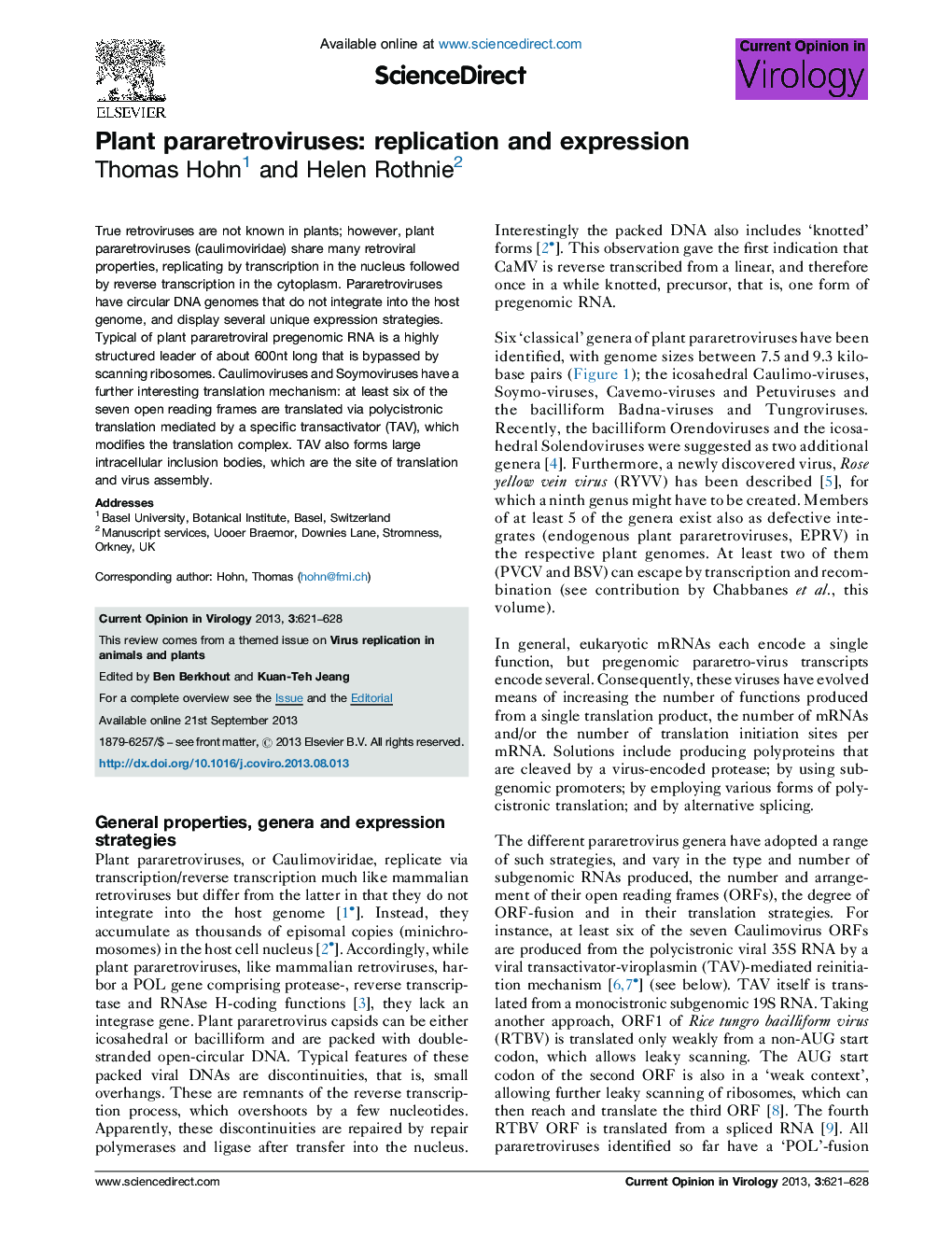| Article ID | Journal | Published Year | Pages | File Type |
|---|---|---|---|---|
| 5806835 | Current Opinion in Virology | 2013 | 8 Pages |
â¢Plant pararetroviruses share properties with mammalian retroviruses.â¢As many as nine genera of plant pararetroviruses now described.â¢Unusual translation mechanism 1: ribosome shunting past structured RNA.â¢Unusual translation mechanism 2: polycistronic translation mediated by CaMV transactivator (TAV).â¢CaMV transactivator (TAV) - a unique multifunctional protein linking viral translation, replication and assembly with host cellular regulatory systems.â¢First plant viral vector (to produce human interferon).
True retroviruses are not known in plants; however, plant pararetroviruses (caulimoviridae) share many retroviral properties, replicating by transcription in the nucleus followed by reverse transcription in the cytoplasm. Pararetroviruses have circular DNA genomes that do not integrate into the host genome, and display several unique expression strategies. Typical of plant pararetroviral pregenomic RNA is a highly structured leader of about 600nt long that is bypassed by scanning ribosomes. Caulimoviruses and Soymoviruses have a further interesting translation mechanism: at least six of the seven open reading frames are translated via polycistronic translation mediated by a specific transactivator (TAV), which modifies the translation complex. TAV also forms large intracellular inclusion bodies, which are the site of translation and virus assembly.
